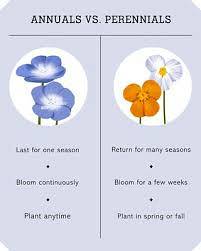5 Tips to Start a School Garden Project
- Organize a School Garden Committee. Getting such a project off the ground requires a team. ...
- Pick the Right Spot on School Grounds. ...
- Secure Funding and Sponsorship. ...
- Plant Short and Long Term Harvest Crops. ...
- Tie it Into Academics to Enhance Support.
- How do you start a school garden?
- How do you start a garden step by step?
- What is the purpose of a school garden?
- What can you grow in a school garden?
- How do you make a garden?
- What does a garden consist of?
- What month should you start a garden?
- How do you start a successful garden?
- What skills does gardening develop?
- Should gardening be taught as a school subject?
- Why is gardening important for students to learn?
How do you start a school garden?
Follow these steps for a healthy harvest.
- Make the case. Before designing a school garden, you'll likely need approval from critical parties (namely school administrators and possibly funders). ...
- Select a site. ...
- Design the garden. ...
- Decide what to plant. ...
- Plan for each season in advance. ...
- Prep the soil. ...
- Learn from each season.
How do you start a garden step by step?
Choose a Step
- Step 1 - Make Good Use of Your Location.
- Step 2 - Plan Your Garden Layout.
- Step 3 - Grow Recommended Varieties.
- Step 4 - Obtain Good Seed, Plants, Equipment, and Supplies.
- Step 5 - Prepare and Care for the Soil Properly.
- Step 6 - Plant Your Vegetables Right.
- Step 7 - Keep Down Weeds.
- Step 8 - Control Pests.
What is the purpose of a school garden?
School Gardens help to extend the classroom beyond traditional settings by expanding it outside. Gardening can provide students with hands-on learning opportunities while increasing environmental awareness and vital experience in problem-solving. In a school garden, children are learning to grow more than just plants.
What can you grow in a school garden?
School garden staples include:
- Peas and beans. ...
- Potatoes are fun to sprout before planting into potato sacks or beds. ...
- Winter squash and pumpkins can be planted out at the end of spring and will be nearing maturity when the children return from their summer break.
How do you make a garden?
How to Start a Garden ŌĆō 10 Basic Steps
- Decide what you'd like to grow.
- Choose a location.
- Plan your garden beds.
- Invest in basic garden tools.
- Test your soil.
- Prepare the soil.
- Choose the right seeds or transplants.
- Plant with care.
What does a garden consist of?
Most gardens consist of a mix of natural and constructed elements, although even very 'natural' gardens are always an inherently artificial creation. Natural elements present in a garden principally comprise flora (such as trees and weeds), fauna (such as arthropods and birds), soil, water, air and light.
What month should you start a garden?
If you're new to gardening, you may think the growing season doesn't begin until April or May. But that's not true ŌĆö you can start planting seeds much earlier. In fact, you should! If you start the right crops now, you'll likely be harvesting your own fresh veggies by April or May.
How do you start a successful garden?
Follow These 10 Steps to Start Your First Garden Off Right
- Consider What to Plant. Do you want to plant a vegetable garden? ...
- Pick the Correct Spot. ...
- Clear the Ground. ...
- Improve the Soil. ...
- Work the Soil. ...
- Pick Your Plants. ...
- Start Planting. ...
- Water at the Right Time.
What skills does gardening develop?
Gardening is educational and develops new skills including:
- ResponsibilityŌĆō from caring for plants.
- UnderstandingŌĆō as they learn about cause and effect (for example, plants die without water, weeds compete with plants)
- Self-confidence ŌĆō from achieving their goals and enjoying the food they have grown.
Should gardening be taught as a school subject?
Here are three reasons why gardening should be taught in schools. Encourage Healthy Eating: ... School gardening provides children with opportunities to gain extra outdoor exercise whilst teaching them useful development skills.
Why is gardening important for students to learn?
Garden-based nutrition education can motivate school children to eat healthier and increase their physical activity. ... The process of planting their own seeds, watching them grow into plants, preparing the grown food, and eventually eating it can give students a new and sustainable perspective on healthy eating habits.
 Planetagarden
Planetagarden



